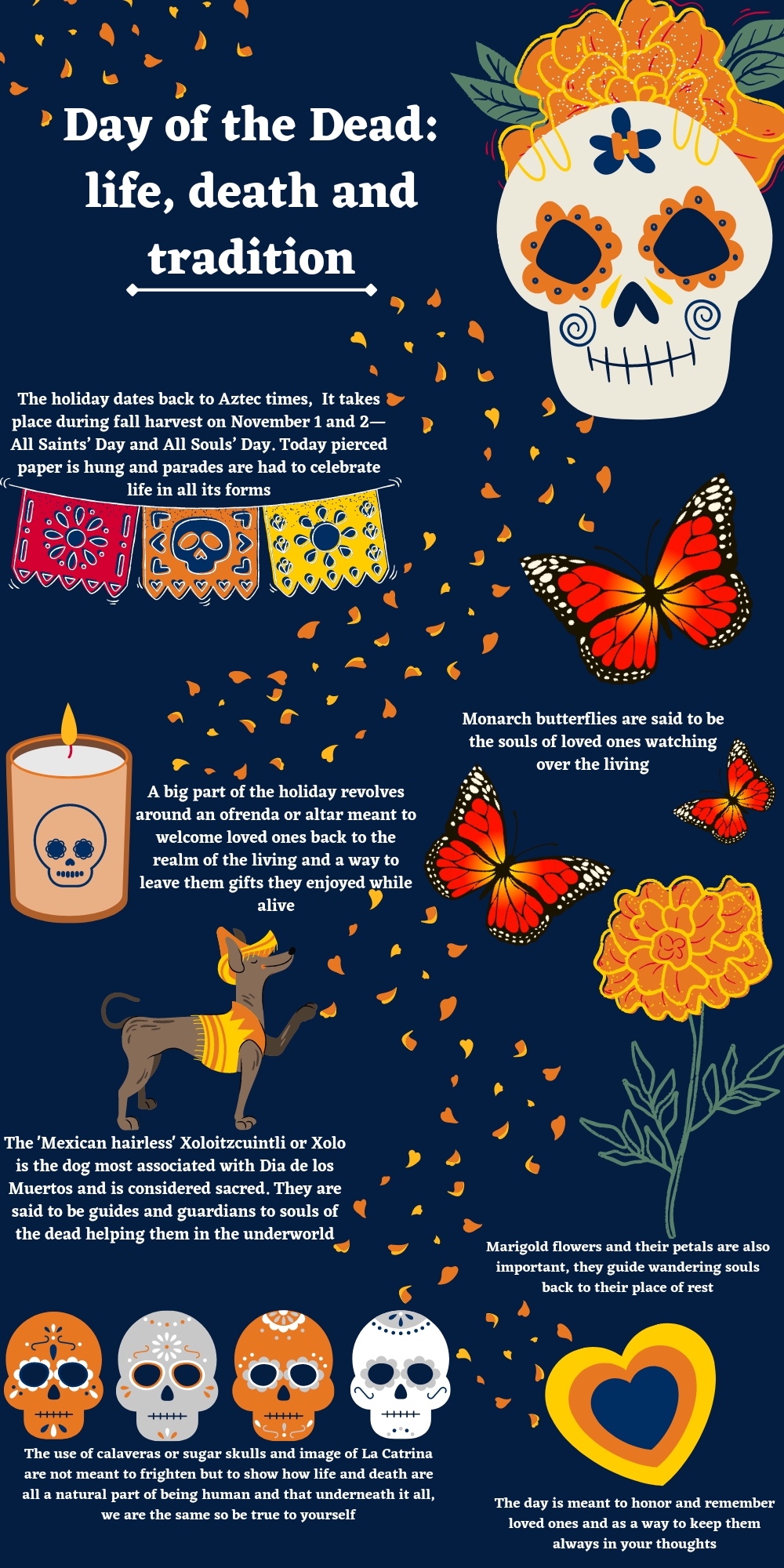INFOGRAPHIC: Celebrating life, death and tradition on Day of the Dead
Día de los Muertos or Day of the Dead originated in ancient Mesoamerica (Mexico and northern Central America) where indigenous groups, including Aztecs, Mayas and Toltecs commemorate their loved ones who have passed away. After the arrival of the Spanish, this tradition of commemorating the dead was intertwined with two Spanish holidays: All Saints Day (Nov. 1) and All Soul’s Day (Nov. 2). Día de los Muertos is often celebrated on Nov. 1 as a day to remember children who have passed away, and on Nov. 2 to honor adults.
The holiday revolves around an altar or ofrenda which acts as a way for families to honor their loved ones and remember them. The ofrenda usually features pictures of the deceased, along with items that belonged to them and objects that serve as a reminder of their lives. Every ofrenda also includes the four elements: water, wind, earth and fire. Water is left out for love ones to quench their thirst. Papel picado, or traditional pierced paper banners hang, representing the wind. Earth is represented by food, especially sweet breads. Lastly candles are often left in the form of a cross to represent the cardinal directions, so the spirits can find their way.
Today, Día de los Muertos is celebrated in Mexico and some parts of Central and South America. Recently it has become increasingly popular among Latin communities abroad, including in the United States. It is a celebration of life, not death, Ancient Mesoamericans believed death was only part of the journey of life and natural. Rather than death being the end, they believed that new life came from death, this cycle is often associated with the cyclical nature of agriculture, where crops (new life) grows from the ground where the last year’s crop (death) lies always moving forward restarting and beginning anew.


